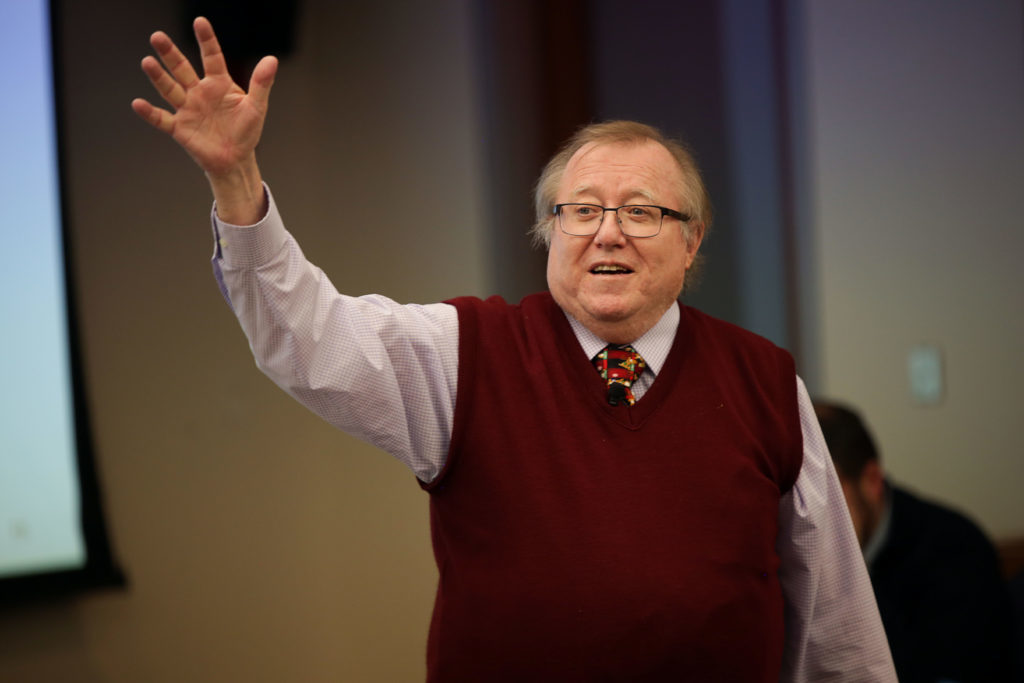The University’s finances are bouncing back faster than expected, officials said.
Joseph Cordes, the associate director of the Trachtenberg School of Public Policy and Public Administration and the chair of the Faculty Senate’s fiscal planning and budget committee, said at a Faculty Senate meeting Friday that GW is operating on a more than $60 million surplus for the second year in a row. The University’s five-year plan for financial recovery – created in 2014 – predicted that GW would still be making up millions of dollars in fiscal year 2018 to account for an unexpected two-year plunge in graduate enrollment.
Following the enrollment decline, the University implemented a series of 3 to 5 percent budget cuts in all central offices from fiscal years 2017 to 2021.
Cordes said the budget committee created a five-year plan for the first time in 2014 that predicted GW would recover from its financial struggles and operate on a surplus by fiscal year 2019. The plan projected the school would be operating on an about $1 million deficit in fiscal year 2018, which ended in June, but Cordes said the University far exceeded expectations again.
GW first saw a promising turn in its budget in fiscal year 2017 when the University operated on a $100 million surplus.
Cordes said the five-year plan, in addition to an overhaul of GW’s budgeting system in 2015, helped GW get back on its feet and realize where the University needed to cut and grow. The new budget model allowed administrators to better predict how decisions, like hiring new faculty or replacing old technology, would impact the University’s finances in the future.
“There’s no question in my mind that we would not have gotten there without the new budget model and without the five-year plan,” he said. “It forces everyone to think differently about what they are going to do.”
He added that GW’s revenue is predicted to grow more slowly than its expenses over the next few years, in part because GW is nearing the maximum number of students it can enroll. GW is allowed to host about 16,600 full-time students on campus because of its agreement with the community, and the University enrolled about 2,800 students in the Class of 2022 this fall – the largest number in at least a decade.
This fiscal year, net revenue is projected to grow by 1.5 percent, and the net expenses are expected to grow by 4.3 percent, according to University data.
Cordes said although GW is in “very good” shape financially, budget cuts and savings may still be necessary because GW’s opportunities for tuition revenue growth are limited.
University President Thomas LeBlanc said at the Faculty Senate meeting that GW would not have recovered so quickly from its enrollment downturns had officials not built up reserves. The University fluctuates between $200 million and $400 million in reserves, which LeBlanc said in May was not enough to help GW withstand emergency financial situations.
“Somehow, the leadership squirreled away every single penny and now, as a campus, we have the ability to monetize for decades to come,” LeBlanc said Friday.
LeBlanc said the University is still discussing how to build up resources and is talking reserve-building strategy with members of the Board of Trustees. He said on Friday that Moody’s, a credit rating agency, has recommended that GW diversify its assets and keep more cash on hand.
“We are over-reliant on our real estate profile,” LeBlanc said. “That’s a fair criticism.”
Provost Forrest Maltzman said the University was able to get ahead of schedule because GW has held some positions vacant, including a provost for online learning and an associate provost for military affairs that were never refilled after the two officials left in 2015 and 2016, respectively.
GW’s enrollment is also at an “all-time high,” which has also contributed to an upward trend in the University’s finances, Maltzman said.
Maltzman added that revenue continues to grow in the online learning sector, where there are also opportunities to save. Maltzman said GW is pushing schools to produce more online courses “in house” to avoid paying third parties to create programs.
“We have some wonderful partners that we have very good relationships with, but, in general, we are trying a new strategy,” he said.





